So, You Think You Know About Salt?
Salt is one of the most ubiquitous ingredients on the planet—it’s found in every kitchen and on every dining table. But don’t let this humble seasoning fool you! There’s far more to this essential mineral than meets the eye. By stocking your kitchen with the right kinds, you can elevate your cooking with just a pinch.
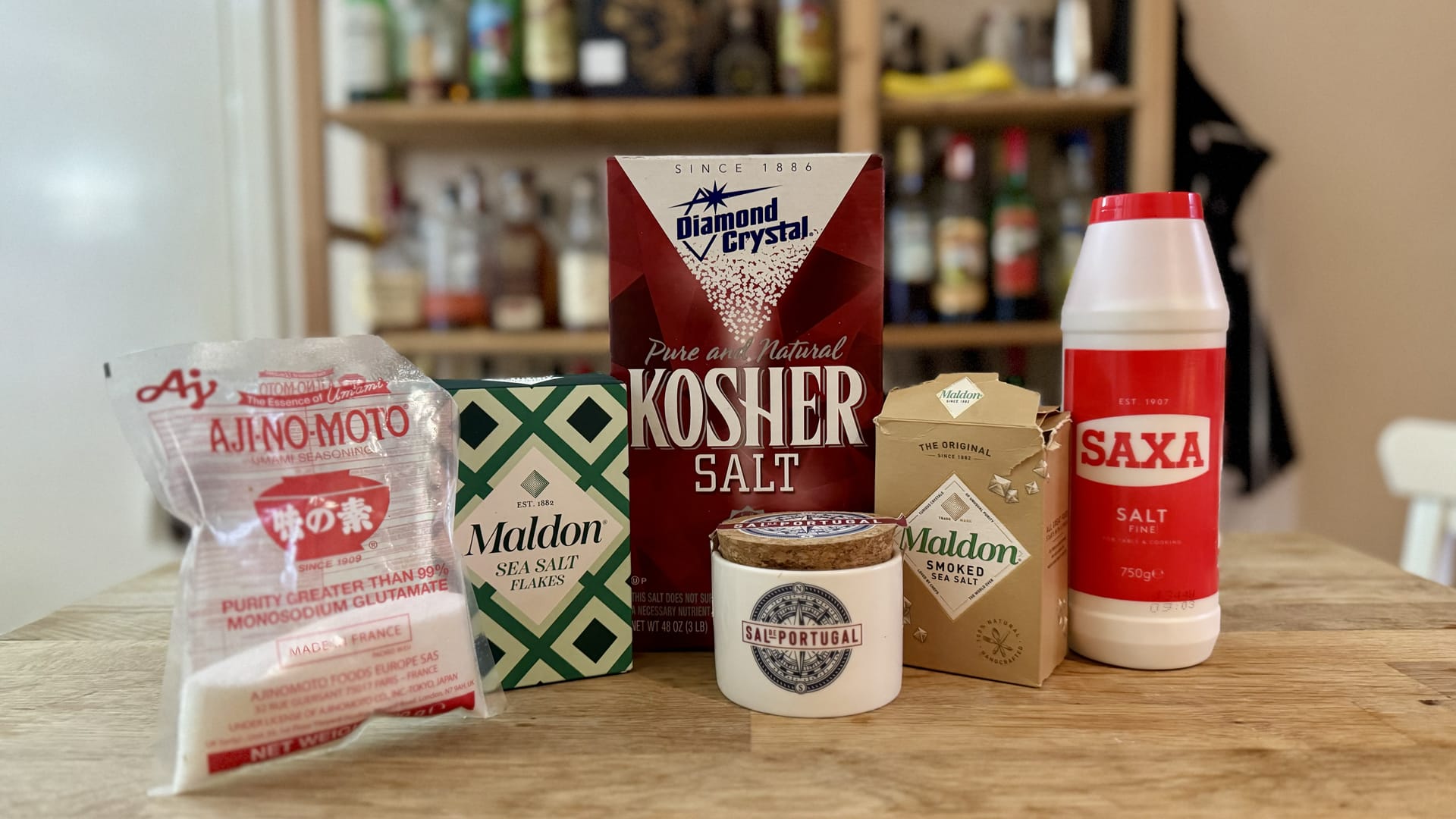
Salt. What could there possibly be to know about salt? If you want the quick answer, jump to the end of this article. If you want to know why, keep reading.
The History of Salt
This is an article about cooking, so I’ll keep this section brief. Salt has been an important part of human life for millennia: it has religious, cultural, and economic associations, and has been used in ritualistic offerings and even trade. The word salary even comes from the Latin word for salt (though no one really knows why).
The use of salt in food preparation is well documented, dating back thousands of years. Its use as both a seasoning and a preservative make salt one of the most commonly consumed minerals in human history.
The Science of Salt
Chemically speaking, a salt is a compound formed when an acid reacts with a base, resulting in positively- and negatively-charged ions held together by ionic bonds. The overall charge of a salt is neutral because the positive and negative charges cancel each other out.
There are many, many different salts with just as many different uses, some noteworthy examples include:
- Ammonium Nitrate – NH₄NO₃: Widely used as a fertiliser due to its high nitrogen content. It’s also a key component in certain explosives. This gives ammonium nitrate the unusual distinction of both giving and taking life.
- Magnesium Sulfate – MgSO₄: Also known as Epsom salt, this compound is used in bath soaks for muscle relaxation. It’s named after the town of Epsom in England, where it was first discovered in mineral springs.
- Copper(II) Sulfate – CuSO₄:
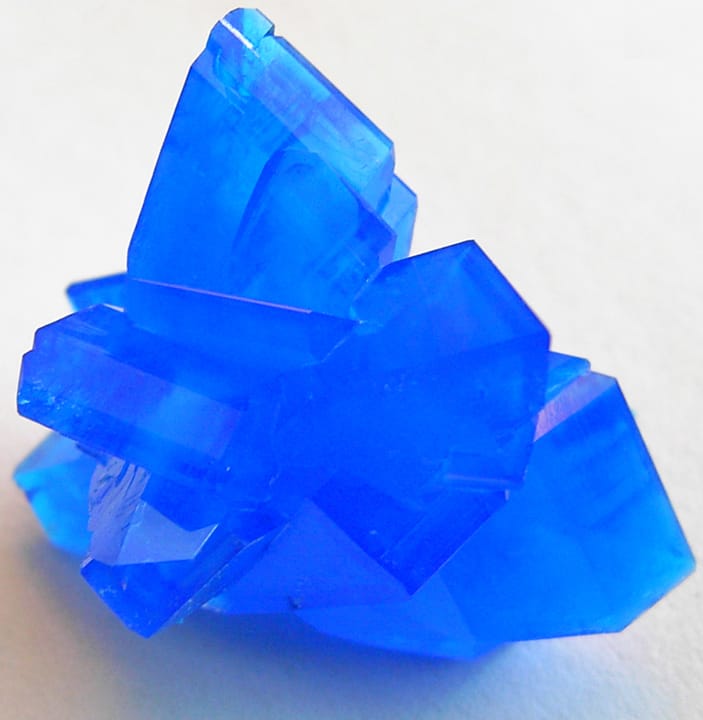 A vibrant blue salt used in agriculture as a fungicide, it also plays a role
in electroplating and dyeing processes. When hydrated, it forms striking blue
crystals.
A vibrant blue salt used in agriculture as a fungicide, it also plays a role
in electroplating and dyeing processes. When hydrated, it forms striking blue
crystals. - Calcium Sulfate – CaSO₄: Commonly used in the food industry as a firming agent (e.g. in tofu) and in plaster for construction. In its hydrated form , it’s known as Plaster of Paris. It’s a key ingredient in making chalk and drywall, meaning you can eat it or draw with it. Nice.
- Potassium Chloride – KCl: Often used as a low-sodium substitute for table salt, potassium chloride tastes similar to sodium chloride but with a slightly bitter aftertaste.
Which brings us nicely onto…
- Sodium Chloride – NaCl: Commonly known as just ‘salt’, sodium chloride is the most familiar salt to us. It is essential for human health, helping us to regulate fluid balance and nerve function. Beyond its use in cooking, it’s also used industrially for de-icing roads, water softening, and in chemical manufacture.
When we talk about salt in this article, we’re talking about NaCl.
Salt in Cooking
Salt has been used in food preparation for centuries, both as a preservative and as a seasoning.
Salt makes food taste better, and this is something humans have known instinctively for millennia. It heightens the natural flavours in ingredients and brings out their best qualities. For example, salt makes a tomato taste sweeter and a steak taste meatier.
Salt activates specific receptors on the tongue, which enhances certain flavours while muting others. It…
- balances bitterness: Sodium ions suppress the perception of bitter compounds, making foods taste smoother and more palatable. This is why you should always season salads and other ‘green’ flavours.
- amplifies sweetness: By reducing bitterness, sweetness becomes more pronounced, helping make desserts taste richer.
- boosts umami: Salt enhances savoury compounds like glutamates (natural in foods like tomatoes and cheese), making dishes more satisfying.
Salt doesn’t just affect taste. It physically changes the properties of certain foods. It…
- tenderises proteins: When salt is applied to meat, it breaks down muscle proteins allowing them to absorb more water and retain moisture. This is why brining makes poultry and pork juicier.
- softens vegetables: Salt pulls water out of plant cells through osmosis which softens their structure. This is why salting aubergine or courgette before cooking reduces bitterness and improves texture.
- improves dough elasticity: In bread making, salt strengthens gluten which helps dough hold its shape and create a better texture in the final loaf.
A truly magical little mineral.
Sources of Salt
Salt comes from two primary sources: rock deposits and salt water.
Rock salt is mined and refined to produce table salt and kosher salt.
Table and kosher salt have distinct applications during cooking—table salt for tasks like salting pasta water, and kosher salt for seasoning as you cook.
Sea salt is harvested by evaporating seawater. Sea salt, particularly in its flaky or coarse forms, is best reserved for finishing dishes.
Each of table, kosher, and sea salt has a place in your kitchen, and there are specific times and applications to use them.
Table Salt in Cooking
Cheap table salt can be bought in bulk. It is often highly processed and is likely to contain additives such as anti-caking agents or iodine. This cheap salt should be reserved for situations when someone is unlikely to actually consume it: think curing fish, where the salt is washed off, or for salting pasta water which is mostly drained and poured away. Using more expensive salts for such tasks is a waste of money (but using cheap salt as an ingredient is not advised either).
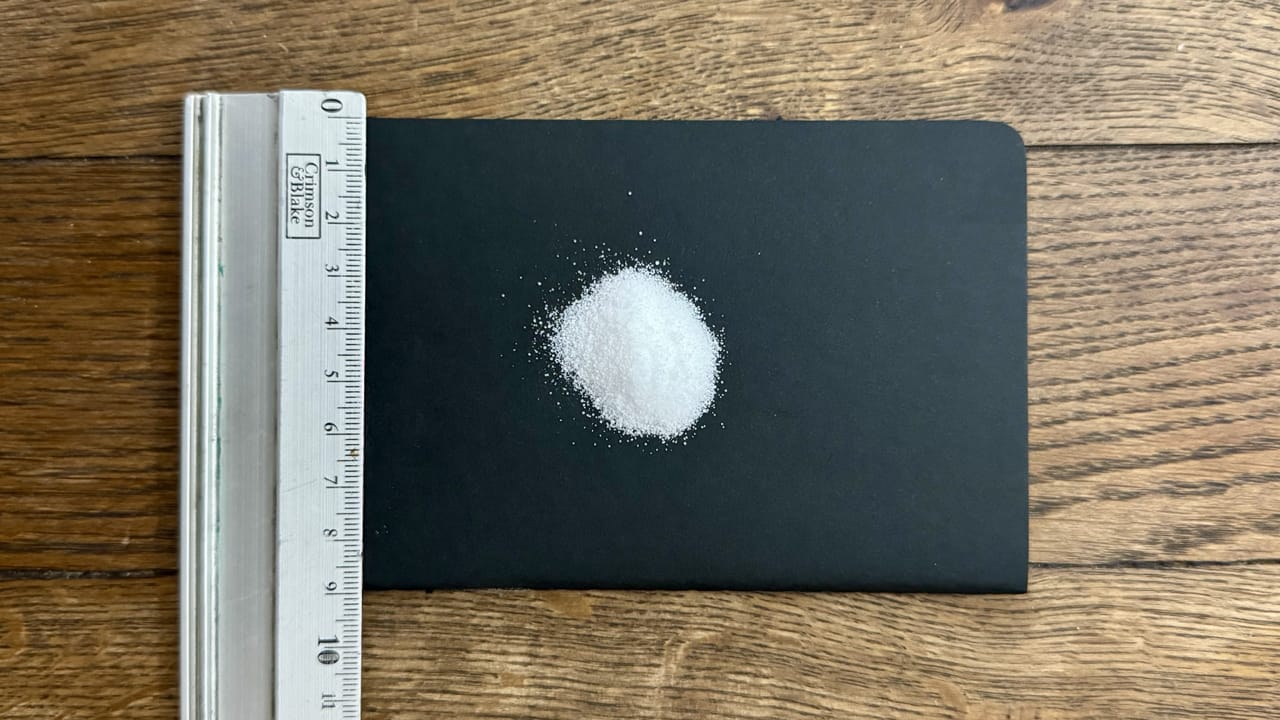
The additives can lead to an impure taste, especially iodine, which can have a metallic quality. Accordingly, don’t use table salt as an ingredient. For that, we have kosher salt.
Fun Fact: Iodine in Table Salt
In the 20th century, iodine deficiency was a real and global health concern. Iodine is essential for producing thyroid hormones which regulate critical functions including metabolism, growth, and brain development.
Iodine deficiency can lead to:
- Goitre: The most visible symptom, it’s the swelling of the thyroid gland in the neck as it works harder to produce hormones.
- Hypothyroidism: Fatigue, weight gain, cold intolerance, and slowed mental and physical performance can result from insufficient thyroid hormone production.
- Developmental Issues: In pregnant women, iodine deficiency can lead to severe developmental delays and other complications in the baby (such as stunted growth and lower IQ).
In the 1920s, scientists in the US recommended adding iodine to table salt as a way of tackling deficiency that was common in in the ‘goitre belt’, particularly in the Great Lakes and Appalachian regions, where soil and food lacked iodine.
Salt became the vehicle for iodine fortification for several reasons:
- Universal Consumption: Salt was (and still is) consumed by nearly everyone daily, making it an ideal delivery system for iodine.
- Low Dosage Needed: Only small amounts of iodine are required to prevent deficiency, which could be easily incorporated into salt without overly altering its taste.
- Cost-Effectiveness: Adding iodine to salt is inexpensive, making it a viable public health intervention.
- Existing Infrastructure: Salt production and distribution networks were already well-established, greatly simplifying the process.
In the 1930s, Switzerland, followed by many European countries, also adopted salt iodisation as a means of tackling iodine deficiency, and by the mid-20th century, it became a widespread strategy worldwide.
So now you know!
Key Takeaway
Cheap table salt isn’t really fit for consumption; use it when you would typically discard it after it’s served its purpose. The low cost helps justify its disposable nature.
Kosher Salt in Cooking
Kosher salt is incredibly common in US kitchens but isn’t something most UK households are likely to have. It’s certainly not something I ever saw growing up, though I can’t speak for any other countries. Is kosher salt common where you are?
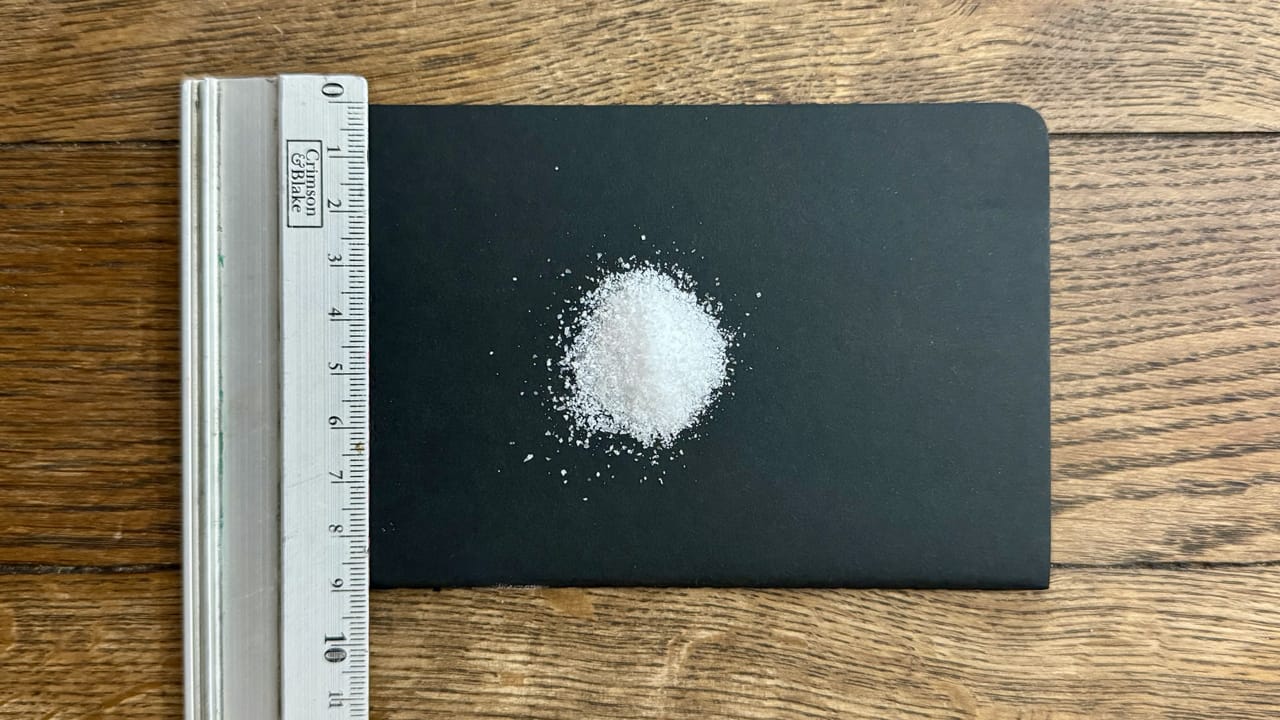
Kosher salt, while kosher, isn’t named for its kosher qualification. Rather, it’s named after its use in the kashering process. Because kosher salt is incredibly pure, lacking additives like the aforementioned iodine, it should be used in cooking instead of table salt. It will not impart any metallic or unusual taste and therefore makes it very well suited to foods that will be consumed directly (and not like salted pasta water which is largely poured away).
Kosher salt is typically more coarse than table salt, but still has a tight and uniform grain which makes it particularly good for even seasoning.
In the UK, kosher salt’s relative obscurity does put it at a slightly more premium price. That said, I bought a 1.4kg box for £12 almost one year ago and I would estimate I have over 1kg left. For the serious cook, it’s a sensible purchase.
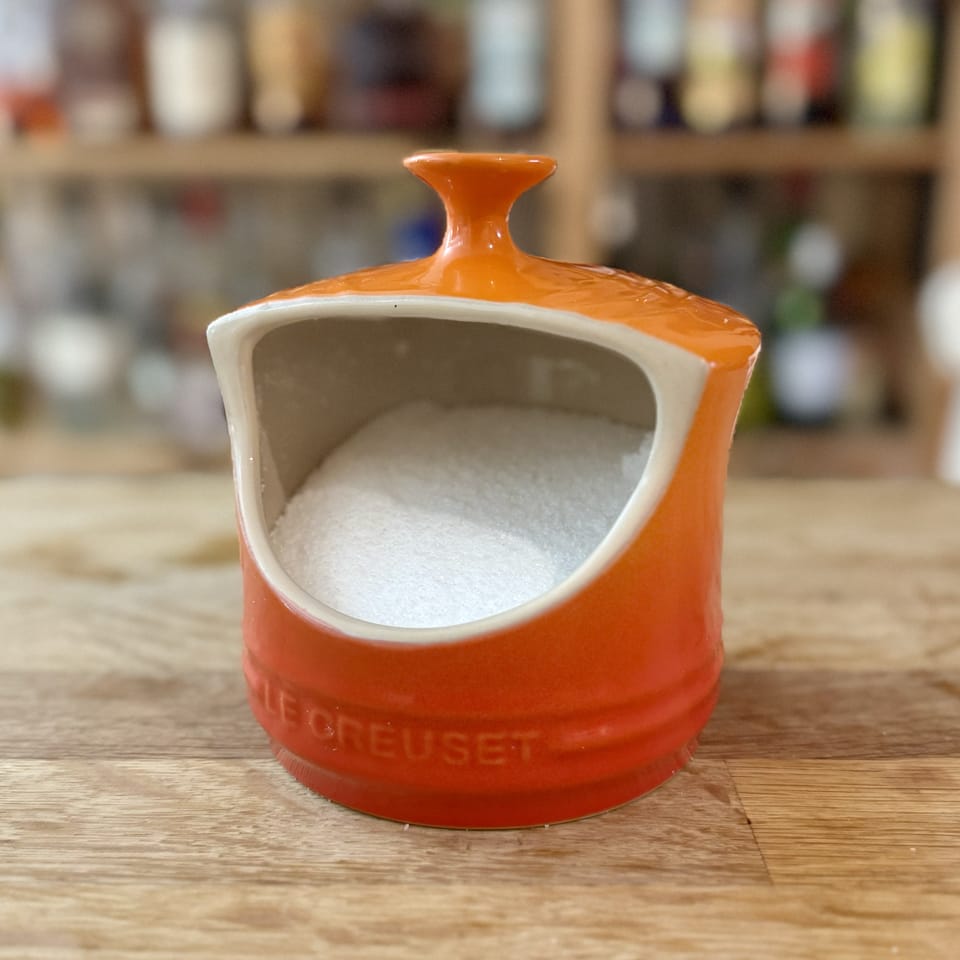
Key Takeaway
Kosher salt will likely become your most-used workhorse salt in the kitchen. Use it to season food before and during cooking. It’s still relatively affordable and should never really go to waste.
Sea Salt in Cooking
Sea salts make for great finishing salts—salt added to finished dishes before serving. Not all finishing salts have to be sea salt, Himalayan rock salt, for example, but most are.
Fun Fact: Himalayan Rock Salt
I would steer clear of Himalayan rock salt. Its touted health benefits are entirely unfounded and its exorbitant price is purely a marketing ploy thanks to its distinctive colour.
Studies have found that Himalayan rock salt is nutritionally similar to common table salt but can cost about 20× as much. Avoid it.
One thing I see home cooks do all too often is use expensive sea salt for everything—they learn about Maldon and start to use that and nothing else.
Not only is this unreasonably expensive, it’s also far less accurate. The large flakes often lead to uneven seasoning, and make salt harder to measure by volume (e.g. a pinch of kosher salt is likely to be saltier than a pinch of sea salt).
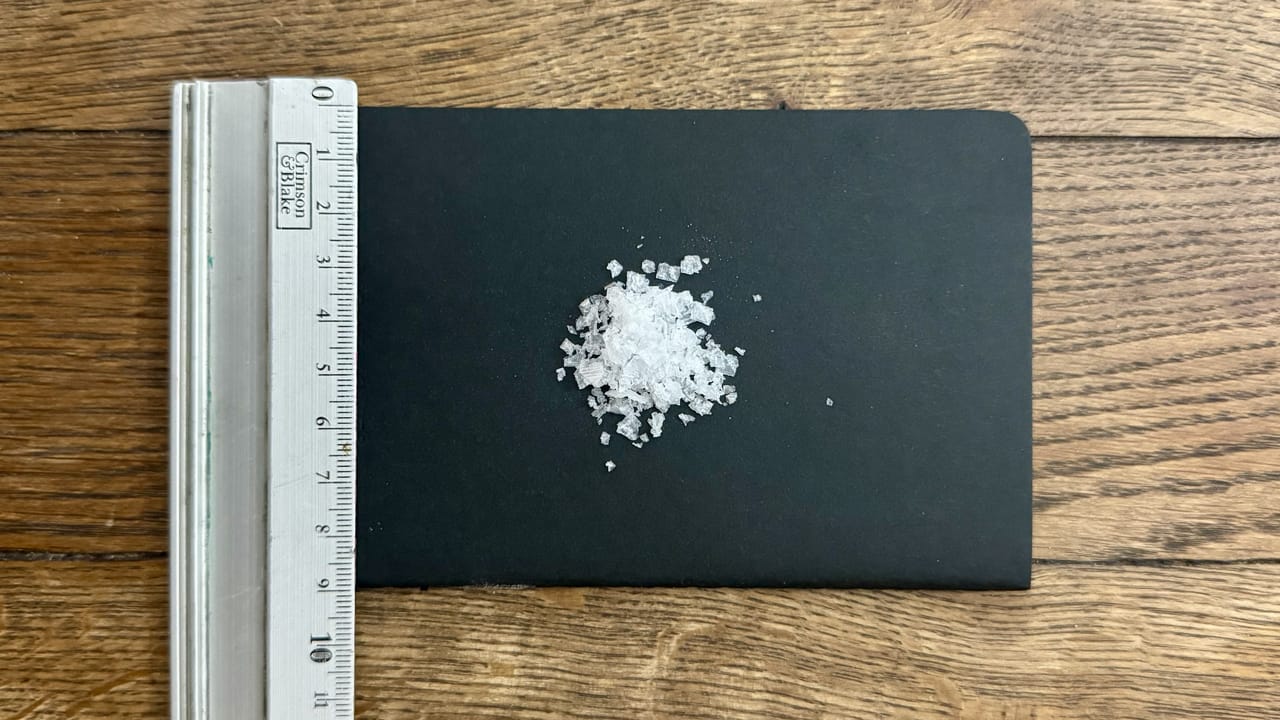
I know it’s tempting to reach for the Maldon as soon as a recipe calls for salt, but your flaky sea salt should be reserved for finishing. While all salt is reasonably affordable, there’s no point using a salt that’s over eight times more expensive when you could be using table salt for seasoning your cooking water. There’s a time and a place for everything.

As salts like Maldon form, they leave behind the most beautiful pyramidal shapes. Some can get to over a centimetre wide! It’s these delicious pyramids that give us that wonderful crunch.
Finishing is also a great opportunity to add flavoured salts, such as a rosemary or smoked salt, like I used on this little snack:
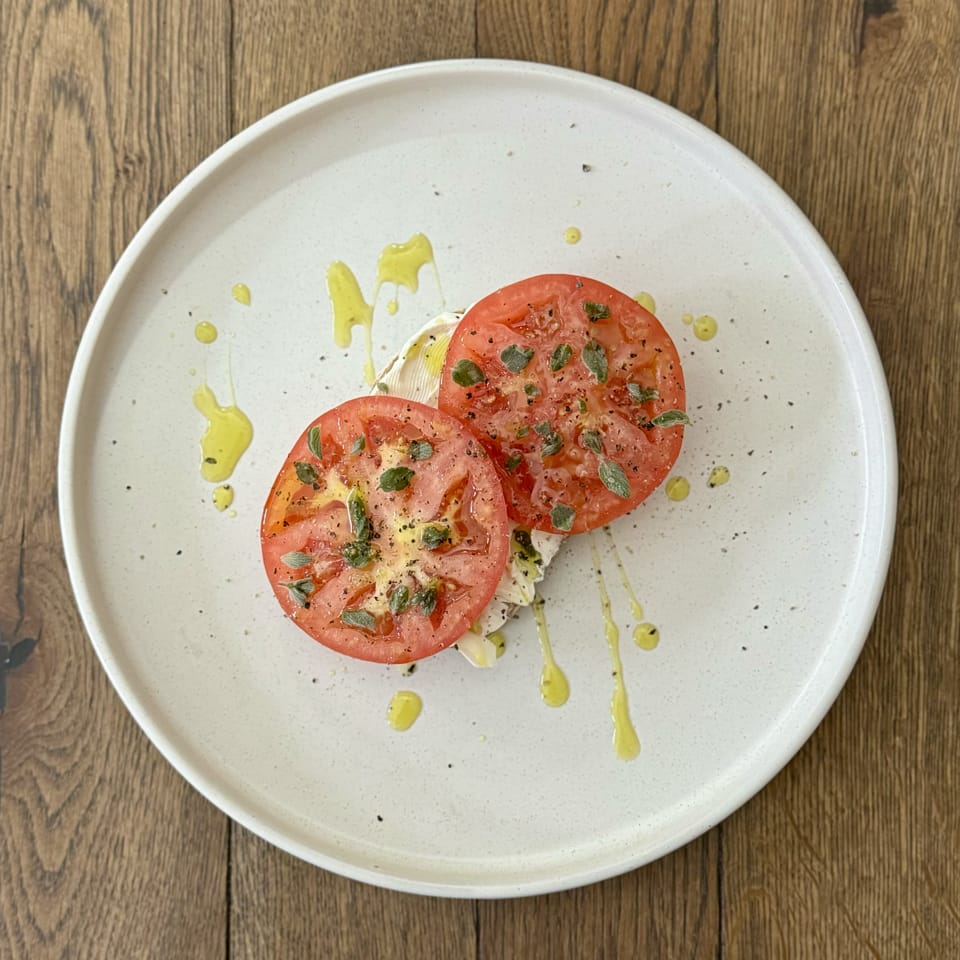
Fleur de Sel
Fleur de sel (or fleur de sal in Portugal and Spain) is a specific category of sea salt that forms as a crust on the surface of seawater as it evaporates. Fleur de sel is a lot more costly than other salts as its harvesting methods are much more complex and time consuming. Where most sea salt is what’s left on the bottom of an evaporated body of water, fleur de sel forms on the surface. This requires that it be harvested by hand.
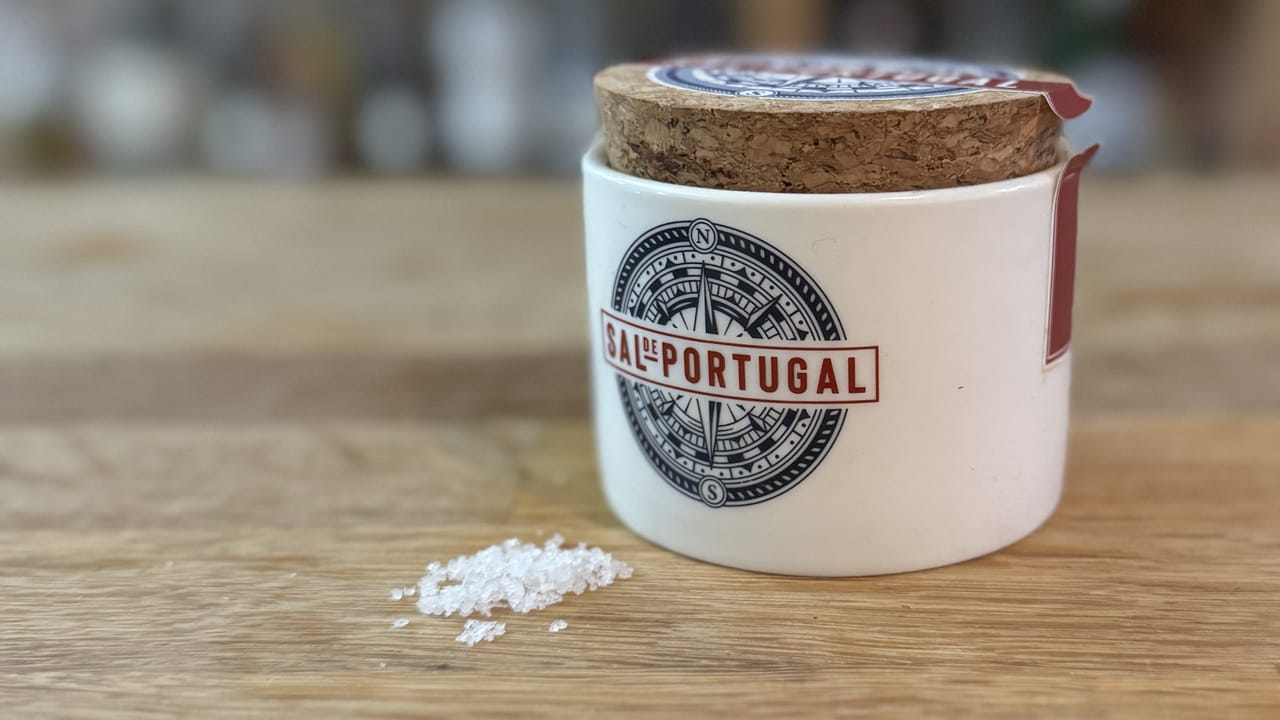
The resulting salt has a much higher moisture content than most other salts which cause the flakes to clump together in snowflake-like patterns. The flavour of fleur de sel is much stronger and more complex than other sea salts, and the specific flavour is often governed by the trace minerals present at the salt’s origin. This means that, much like a wine’s terroir, fleur de sel’s flavour can be highly distinctive and unique based on its conditions.
I have some fleur de sal that was gifted to me a few years ago. It’s reserved for the good stuff: finishing steaks.
Key Takeaway
Sea salt, especially flaky varieties like Maldon, are best suited to finishing dishes to add visually pleasing seasoning, and textured, non-uniform bits of salty crunch! For very high-end seasoning, fleur de del (a specific type of sea salt) can be used.
The Three Types of Salt Every Kitchen Needs
To get the best out of your cooking, stock your kitchen with these three types of salt:
- Cheap Table Salt: Ideal for non-consumptive uses like salting pasta water or curing fish. It’s highly refined and highly affordable. As it’s often iodised to prevent iodine deficiency, its additives make it less ideal for seasoning.
- Kosher Salt: A workhorse in the kitchen, kosher salt’s coarse grains and clean flavour make it ideal for everyday cooking. It’s easy to pinch and sprinkle, ensuring even distribution in your dishes. Its purity also means it won’t bring unwanted flavour profiles with it.
- Finishing Salt: More expensive sea salts are perfect for finishing. Their course grains mean that, while no good for even seasoning, crunchy texture and irregular bursts of saline flavour make for a delicious eating experience. Its relatively higher cost also means it’s best used more sparingly as a garnish.
The Salt Starter Pack
If you wanted to buy an incredibly useful and cost effective gift for the home cook in your life (even if that home cook is yourself), I would highly recommend this lineup as a salt starter pack:
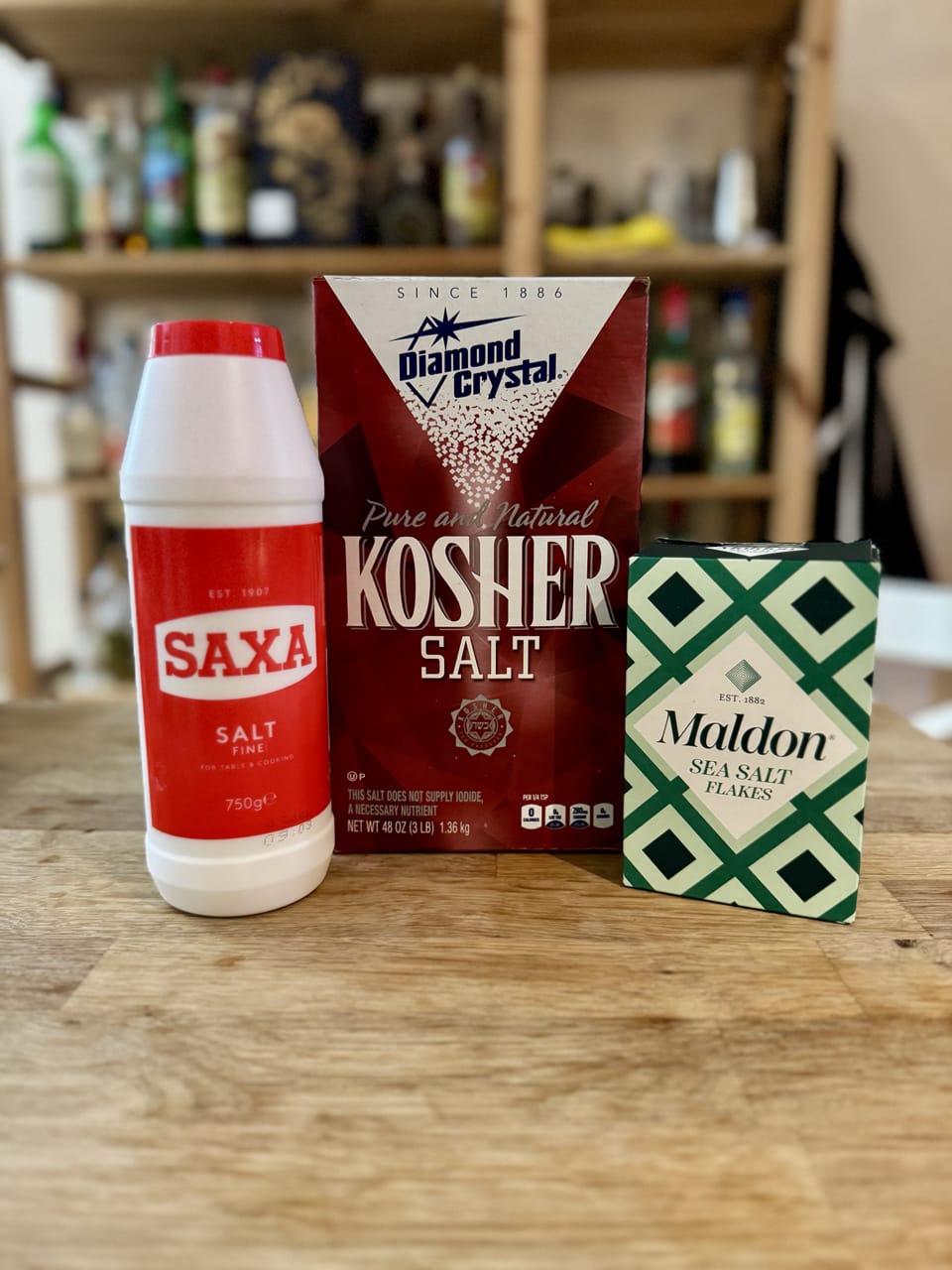
Bonus Round: MSG – C5H8NO4Na
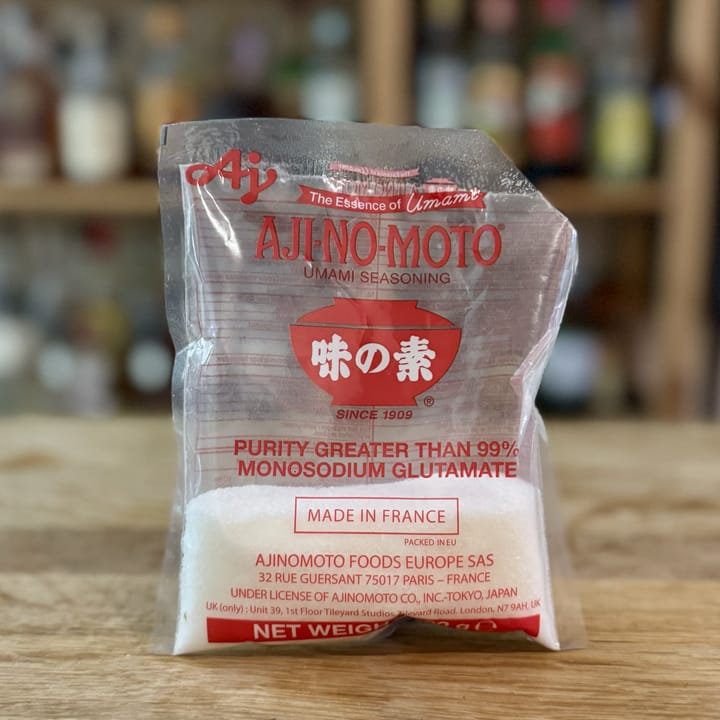
That’s a mouthful.
Monosodium glutamate, or MSG, is an unjustly controversial ingredient that home cooks should definitely take note of. While chemically very different to NaCl, MSG is still a salt in the scientific sense. It has a less salty and more savoury flavour: umami.
Although closely linked with Asian cuisine, MSG is naturally occurring in foods like tomatoes and cheese. This is why a lot of traditional Italian recipes ask you to add a Parmesan rind to tomato sauces: it doesn’t lend a cheesy flavour, but a savoury one.
Fun Fact: MSG and the West
Despite its natural presence in typically Western ingredients, MSG has long been misunderstood, earning a bad and misplaced reputation as being unhealthy. Interestingly, the lethal dose of MSG is about five times greater than that of salt! The controversy with MSG is likely attributable to Robert Ho Man Kwok’s satirical Chinese-Restaurant Syndrome, a letter published in a 1968 edition of the New England Journal of Medicine. His writing was taken out of context and decades of fear and misunderstanding ensued.
Interestingly, food scientist Steve Witherly reckons MSG might actually have indirect health benefits! He hypothesises that MSG can make otherwise less-tasty health foods such as kale far more tasty and appealing, while simultaneously promoting a reduction in the amount of NaCl-salt used.
MSG is a great addition to any home kitchen. While I almost exclusively tend to use it in Asian dishes, next time you’re making a tomato sauce, try reducing the amount of salt by about a third, replacing with MSG. You’ll get a much deeper, richer flavour, I guarantee it.
I have begun experimenting with a general-purpose seasoning which is a 9:1 ratio of kosher salt to MSG. Even at only 10% MSG content, its flavour profile is far more savoury.
tl;dr
- Cheap table salt in bulk for seasoning cooking water;
- Kosher salt for general seasoning and cooking;
- Finishing salts such as flaky sea salt, flavoured salts, or fleur de sel for dressing and garnishing finished dishes, and;
- MSG for adding a less salty and more savoury profile to dishes.